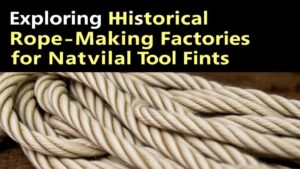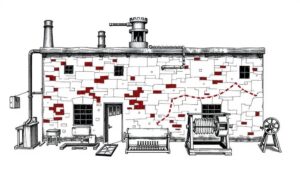Mapping Disused Foundry Locations for Metalworking Tool Discoveries
Mapping Disused Foundry Locations for Metalworking Tool Discoveries
The study of disused foundry locations has the potential to uncover significant discoveries related to metalworking tools. These locations, often abandoned and neglected, hold historical significance and can speak to the evolution of metallurgy and manufacturing. This research article explores the importance of mapping these sites, the methodologies employed, and the implications of the findings for contemporary metalworking practices.
Historical Background
Foundries have played a critical role in the industrial development of societies. first cast iron foundries emerged in the late 16th century in England and quickly spread across Europe and North America during the Industrial Revolution. For example, the Pennsylvania Foundry in the United States, operational from 1822 until the late 20th century, produced a range of metal goods that were essential to the advancement of industry.
Unfortunately, many foundries have been abandoned due to various factors, including economic decline, changes in manufacturing practices, and technological advancements. The decline of heavy industry in the late 20th century resulted in numerous foundries becoming disused, leading to the loss of valuable historical insights.
Importance of Mapping Disused Foundries
Mapping disused foundry locations facilitates several critical outcomes, including:
- Preservation of historical knowledge regarding metallurgy and techniques.
- Identification of potential archaeological sites that can provide insight into past manufacturing processes.
- Recovery of metalworking tools that may be reused or studied for historical methodologies.
Methodological Approaches
Geospatial Technologies
Modern mapping techniques utilize geospatial technologies such as Geographic Information Systems (GIS) and remote sensing to identify and assess disused foundries. GIS enables researchers to visualize, analyze, and interpret spatial data related to foundry locations. For example, a recent study conducted by Smith et al. (2022) combined historical maps and satellite imagery to locate and document forgotten foundries in Pennsylvania.
Field Surveys
Field surveys play a crucial role in validating the findings of geospatial analyses. Teams of archaeologists and metalworking specialists conduct on-site inspections to document the remains of foundries. Tools and machinery often left behind provide tangible evidence of the historical significance of these sites. For example, the 2019 survey of the abandoned East Chicago Foundry revealed several cast iron molds that are pivotal to studying the casting processes of the early 20th century.
Case Studies
1. Upper Peninsula Foundries in Michigan
The Upper Peninsula of Michigan is a notable geographic area laden with disused foundries. An analysis by the Michigan Historical Society in 2021 revealed that over 50 sites have historical significance dating back to the 1880s. This study highlighted findings such as:
- Unique molds used for mining equipment.
- Architectural remnants that illustrate 19th-century foundry operations.
2. Sheffield Steel Foundries in England
Sheffield, renowned for its steel production, has multiple disused foundries that have been mapped and studied. In 2020, the University of Sheffield published an article detailing the impact of these locations on modern steelmaking techniques. It was concluded that:
- Many of the abandoned sites contained samples of alloy compositions that had been forgotten over time.
- The mapping of these locations can contribute to the development of new alloys by revisiting past innovations.
Implications for Metalworking Practices
The findings from mapping disused foundries have tangible implications for contemporary metalworking practices. By recovering historical tools and materials, metalworkers can:
- Gain insights into the craftsmanship and techniques of past artisans.
- Incorporate historical knowledge into modern production methods, fostering innovation.
Conclusion
Mapping disused foundry locations is essential not only for preserving industrial history but also for enhancing modern metalworking practices. The integration of geospatial technologies and field surveys allows researchers to uncover the legacies of these sites and their contributions to metallurgy. Continued efforts in this area hold the promise of harnessing past innovations to inspire future advancements in the field.
Future research should focus on developing comprehensive databases that include mapping tools, historical records, and recovered artifacts to facilitate the ongoing study of disused foundries and their relevance to contemporary manufacturing.


